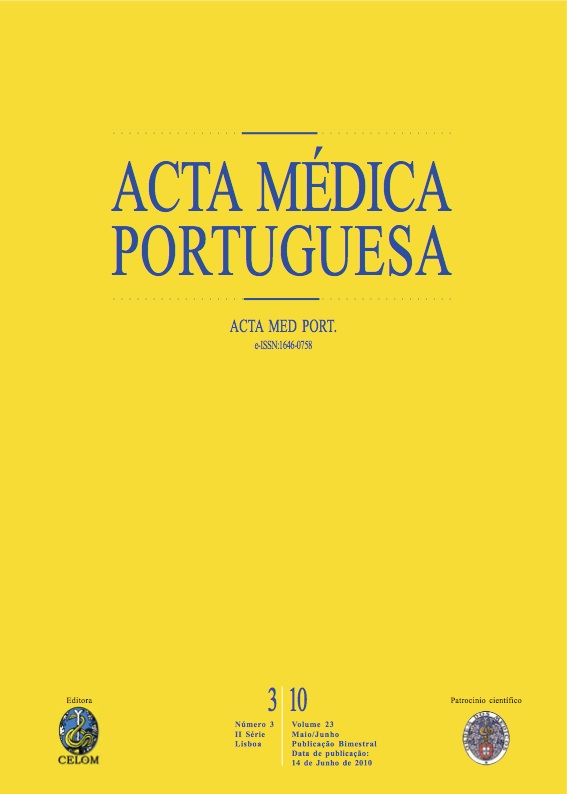Prevalence of nutritional inadequacy among Portuguese children.
DOI:
https://doi.org/10.20344/amp.645Abstract
Obesity is one of the most serious health problems in children, and it's frequently related to low activity levels and inadequate nutrition. To evaluate the prevalence of nutritional inadequacy a total of 4845 children (2445 girls and 2400 boys) aged 7-9 years old, were observed. Height and weight were measured according to international standards, and body mass index (BMI) was calculated. Overweight and obesity, using age- and sex-specific BMI cut-off points as defined by the International Obesity Taskforce, were used. Children's dietary intake was measured using a 24-h dietary recall by trained researchers. To evaluate nutritional inadequacy, Food and Nutrition Board Dietary Reference Intakes and World Health Organization (WHO) recommended intake goals were used. The prevalence of overweight/obesity in this sample was 30.8% and the proportion of children with an intake below the Estimated Average Intake/Adequate Intake was very low (= 10%) for the following nutrients: vitamins A, B1, B2, B6, B12, and PP; and for magnesium, zinc, iodine, phosphorous, selenium, and iron. High prevalences of inadequacy were found for folate (60.5% in girls and 54.6% in boys), vitamin E (63.9% in girls and 59.5% in boys), calcium (45% in girls and 40.7% in boys), molybdenum (89.7% in girls and 87.4% in boys, and fibre (87.8% in girls and 86.7% in boys). Regarding the macronutrients, 65.9% and 78.8% of the individuals were above WHO recommended intake values for protein and total fats, respectively; 22% didn't ingest lower than WHO carbohydrates intake recommendation. We've also found that 81.4% and 97.3% of the individuals were above WHO recommendations for saturated fatty acids and total sugars, respectively. Regarding cholesterol intake, 53% of the individuals ingested more than the recommended by WHO. In conclusion, the prevalence of inadequate intakes of calcium, vitamin E, folate, molybdenum and fibre was unacceptably high, while and the contribution of total fat, saturated fat and sugars were far above the recommended by WHO. This could be associated to major chronic diseases, such as coronary heart diseases, in later life.Downloads
Downloads
How to Cite
Issue
Section
License
All the articles published in the AMP are open access and comply with the requirements of funding agencies or academic institutions. The AMP is governed by the terms of the Creative Commons ‘Attribution – Non-Commercial Use - (CC-BY-NC)’ license, regarding the use by third parties.
It is the author’s responsibility to obtain approval for the reproduction of figures, tables, etc. from other publications.
Upon acceptance of an article for publication, the authors will be asked to complete the ICMJE “Copyright Liability and Copyright Sharing Statement “(http://www.actamedicaportuguesa.com/info/AMP-NormasPublicacao.pdf) and the “Declaration of Potential Conflicts of Interest” (http:// www.icmje.org/conflicts-of-interest). An e-mail will be sent to the corresponding author to acknowledge receipt of the manuscript.
After publication, the authors are authorised to make their articles available in repositories of their institutions of origin, as long as they always mention where they were published and according to the Creative Commons license.









